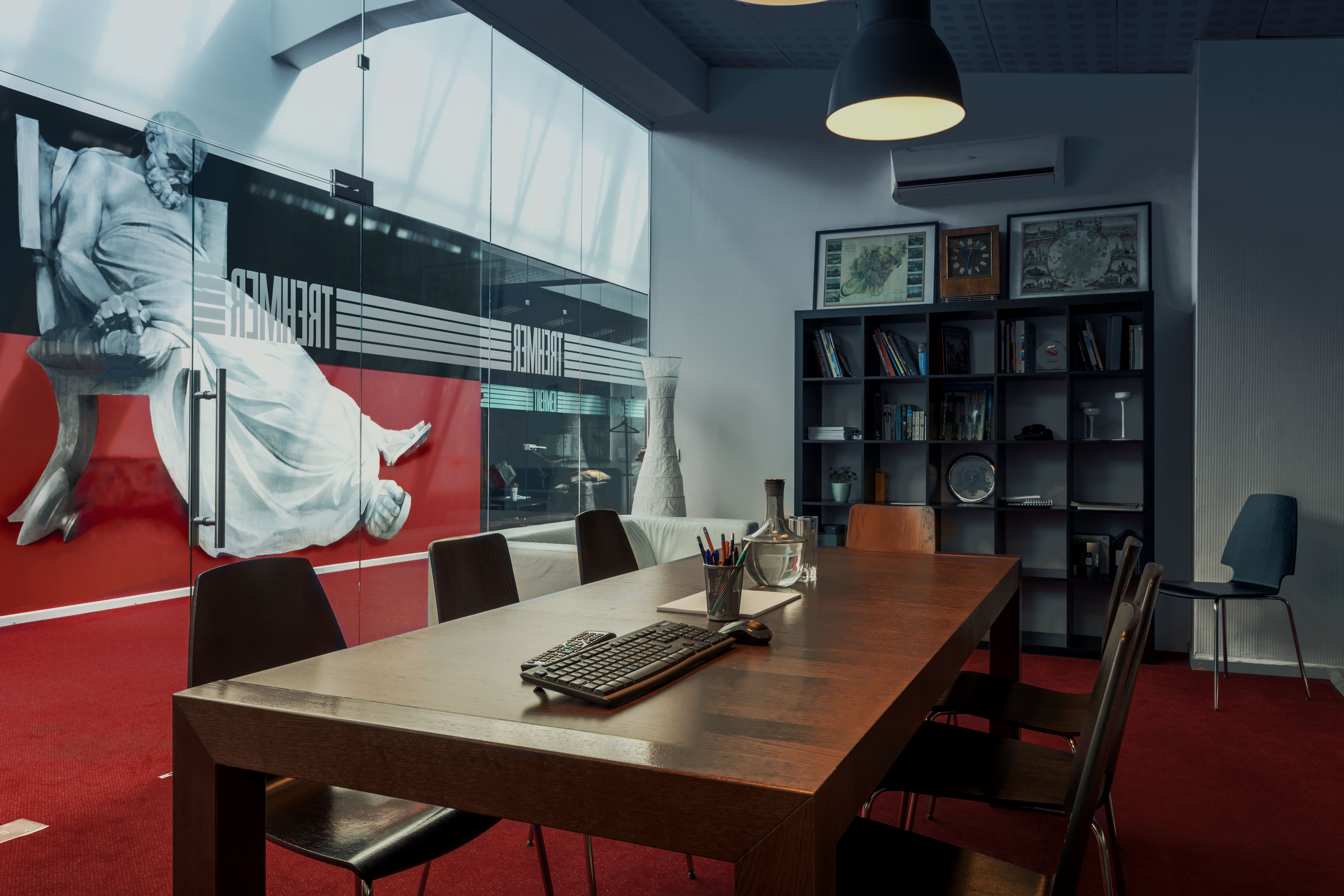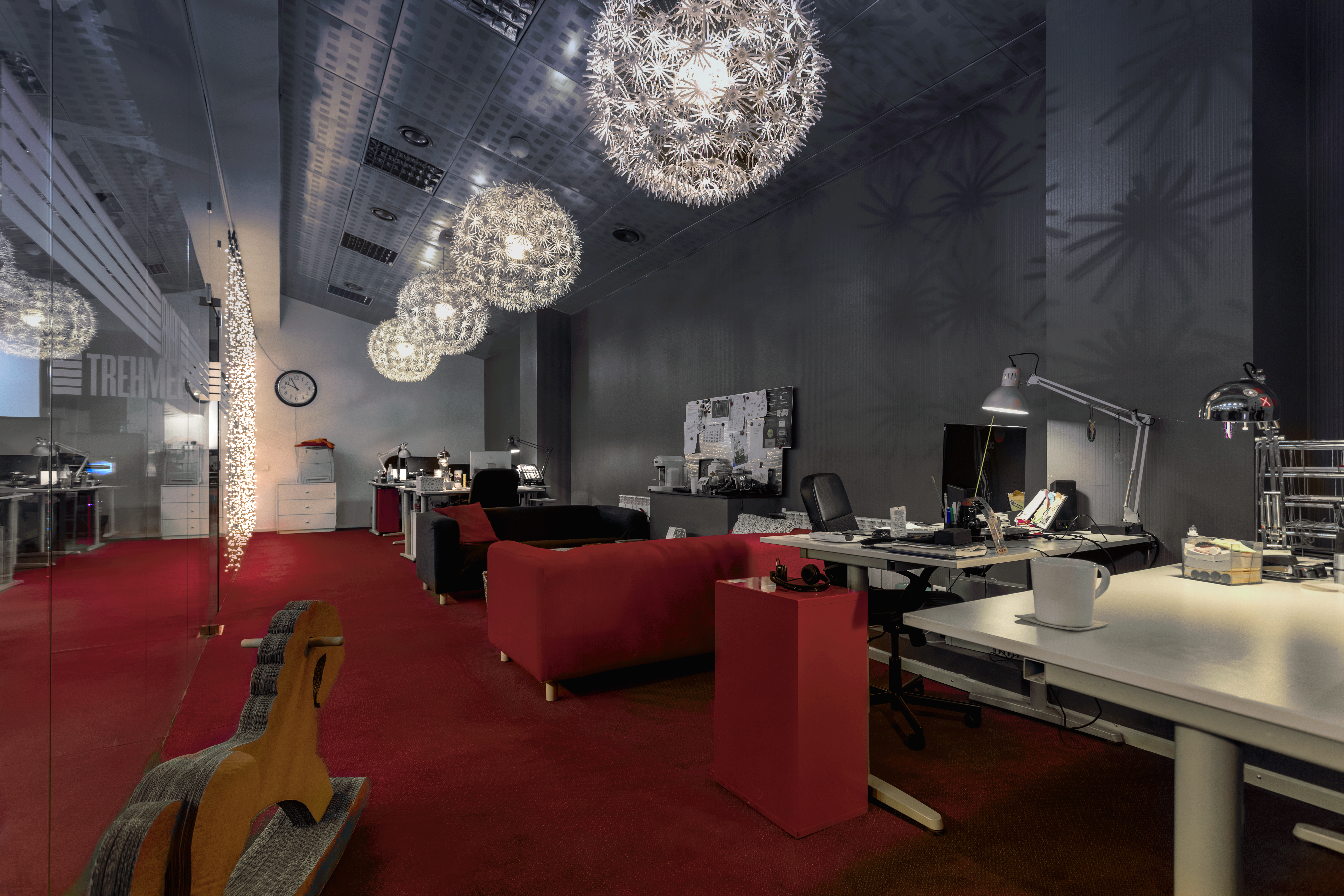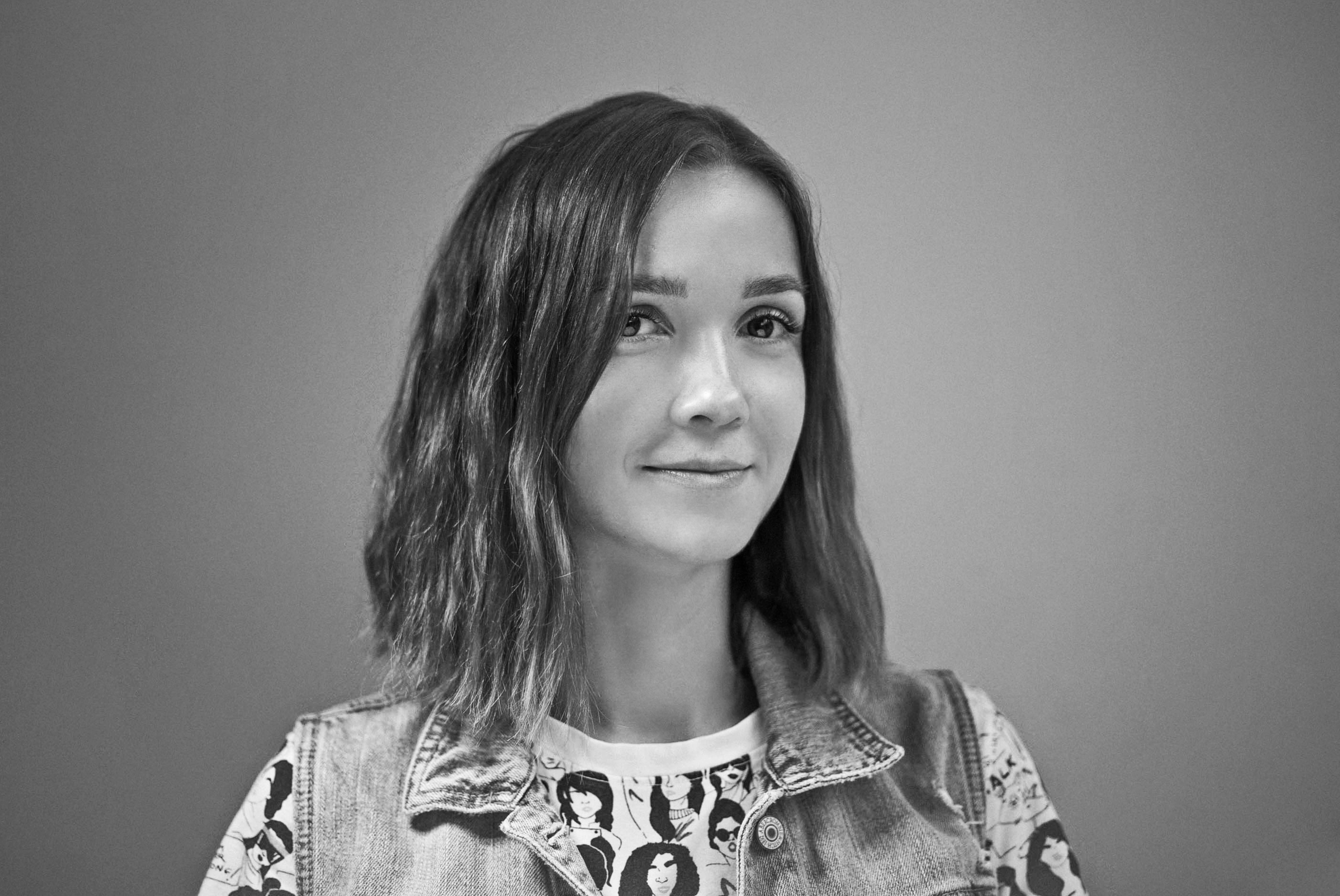Cerebro continues publishing interviews with customers. We talk with producers, project managers, and other industry professionals. We have talked to the executive producer Trehmer Studio Elena Degtyareva about her work in the animation company, hiring practices and experience with projects management systems.
You are a general producer at Trehmer CG. Let’s explain for those who, like me, do not exactly know the difference between a general producer and an ordinary producer. What are your duties?
The general producer is a head of ordinary producers. For now, we have eight of them in our marketing department. I define the development vector and our global goals. We are not only working on the existing projects, but also developing future moves and perspectives. These are my duties.
Besides, I take over projects that encounter crisis, on any stage. For example, it may be a foreign project (unfortunately, not all our managers have a good command of English) or a large project with an important customer and a huge budget for a huge movie clip. Those are much more complicated than our average projects. Plus, the general producer manages internal activities: they act as a supervisor for customers at each stage of the project, takes care of new customers, and maintains relations with current ones. This is a huge pool of responsibilities.
You have a lot on your plate, don’t you?
Yeah, the general producer has to both define the development vector and lead other producers. We don’t have many levels, only two: a producer and a general producer. We used to have more levels, including producers and managers. Producers were to launch projects and managers were to implement them as in-house contributors. However, we eventually decided the system was not efficient and dropped it. Besides, we can’t exactly put our finger on some major differences between producers’ managing duties and managers’ contributing duties.
I bet your working days are always different. Let us talk about yesterday. What happened then? How do you plan your daily routine?
At marketing department, we have to consider a lot of contracts during the day. We have to distribute them among producers. Ever contract has a deadline for budgeting and presentation of our portfolio (our projects, similar in theme and style), filming scheme, technical developments. Apart from that, we look for references and an art director for the project.
We have a chatroom for producers, where I send the info about a project, whether it is for an agency or a direct customer, and ask for volunteers to take over it. Next, a producer takes over and we agree upon a budget, plan the activities to meet the deadline, consider the resources we might need and what issues we can encounter if we land this contract. Of course, during the day we have comments on current clips, meetings with potential customers and agencies, responsible for current projects. For example, right now we have representatives of quite a popular digital agency at our studio. When they come, we have to greet them, go through as many comments and issues with our video as possible, and I stay with them the whole day, so that they feel comfortable. Also everything should work, because, like everyone knows, anything in our wonderful digital world can stop functioning any second, be it monitors, render farms, or something else.

At the beginning of the interview, you specifically clarified that you work for Trehmer CG. So your company has a production unit, Trehmer-Film, and Trehmer CG. Could you elaborate, why do you have three different establishments?
We do business under the common brand, Trehmer, which has been known since 1996. It started as the Trehmer CG studio, which was engaged exclusively in the CG production for advertisements, TV shows, films, and events. A little later, a production unit was created under Trehmer CG. We decided to produce video clips among all else, and this unit has been successfully functioning ever since. This unit is scaled to the task. We don’t keep many employees in the office at all times in this unit, because we don’t need them permanently. The team is quickly assembled to make a certain video, and when it’s ready, it ends up in the CG.
At some point, our studio came to a conclusion that the movie making market is potentially a very good niche, and since we occasionally made projects for movies in one way or another, we decided to make it a separate unit. So now we have three huge units under the Trehmer brand.
Do you interact in any way? How much?
Naturally, we do. Our production unit often serves as our contractor. However, this doesn’t mean we limit ourselves to serving our production, this isn’t true. We work across the whole market and can compete for the same contract along with our production unit or their competitors.
CG and movie making often have similar tasks and goals. Like, we make a clip for Rosneft. It was a tricky task for an advertising unit; we have to film a video about a bear cub walking across a city. The usual advertising stuff is when we use chromakey, when we use green screen and make a footage, it’s pretty simple and quick. Movie department tends to have trickier and bigger tasks, so we sometimes collaborate to make such complex clips. Similarly, they can collaborate with us, if, for example, they need to develop interfaces for a movie. Our movie making unit is strong in the technical area, such as keying, compositing, FX, but design is not their strong point. Developing an interface of a complex mechanism or a complex mechanism per se, say, an alien typewriter, is already a task for us. Although this is movie-related task, we are developing it, and then the material goes to a movie. Similarly, the movie unit may receive a task to make credits, which is not the forte of filmmakers. If a task is simple, then the guys will do it on their own, but if it is motion graphics, then they ask us to help, and we stand in a united front. We, the advertising and the movie units, also come to meetings together. The movie makers are responsible for their pool of work, while the advertisers are in charge of the credits. So we constantly do mutually related tasks. Over the past year, this happened with several projects: we developed the look, while they implemented it.
Do I understand correctly that you all work here together? What is your staff headcount?
We all work in the same huge office, and we have no other workplace. This one is gigantic, and we have a great potential, as you can see (laughs). Overall, all three units employ some 80 people. However, due to the scalability of production, I’d rather say 70 to 80 people.
I know that you came to Trehmer from Da Studio, which makes animation.
Yeah, I really come from animation, but not exactly from Da Studio. I come from the Parovoz studio, where I worked for several animation projects within a year.
The main question is—why’d you quit? Was animation so bad?
Everything is great with animation! Parovoz is an amazing place, but at a certain point in a producer’s career you feel that you have implemented all your ideas and exhausted all your potential at a certain place. Then there is a risk you become a mechanical worker instead of a producer, which is not very interesting. Animation is a giant hierarchical system with streamline production; it is a completely different sport.
I had the opportunity to work in movie making, advertising, and animation, so I can say that for a producer, these feel like different distances, different speeds, a different approach to work: everything happens differently, despite the fact that this would seem to be the same computer graphics. Often the contributors, such as FX artists, composers go from movie making to advertising, from advertising to movie making, but animation is a separate island with its own laws and with a very fractional, highly specialized system.
But what if you decided to try a different field? How does it happen? Do you think you should put up your CV on HeadHunter and look for a new job? I thought that specialists are literally handed over from one company to another, is that so?
I don’t remember having a producer’s CV on HeadHunter. I would actually be taken aback if I saw a CV of a VFX producer. Technically, I do have a CV. I remember coming back from my maternity leave at Parovoz and updating it. I think that HeadHunter is a convenient place to make a CV, download it as a PDF file, and carry around. However, our industry is very small, and the better you work, the more people know you. On the one hand, it is a good thing: if you’re a great worker, everyone will know, but on the other hand, they will also know if you mess up. I haven’t uploaded my CV anywhere; this was a pure coincidence.
Were you drawn by fate?
One could say that. I did not plan to work in advertising, but we very quickly found a common ground with senior managers of Trekhmer. My vectors, views on the studio’s potential very much coincided with the views of my wonderful leaders, and we came to a swift agreement. During my job interview, we spent about four hours talking about what we can do. When a producer has some room to maneuver, this is a huge responsibility, but it is also a huge opportunity. At the right moment, Trehmer provided me with this opportunity I needed.
So it all happened in one moment? You talked for four hours and they said, ‘We offer you the job!’ or did it take more time?
The offer was made very fast, during the interview. But the producer cannot quickly change the place of work, because we have long projects and systems, so it’s impossible to just come to the office and say, “Guys, thank you very much for everything, but my life goes on, so that I’ll bid you farewell in two weeks from now.”It cannot happen with a producer, because it will trigger a collapse of a studio. Such workers are not replaced quickly. Thus, despite the offer and everything, we only met and started working in two months.
How do you juggle your career and your family? You’ve mentioned your maternity leave, so it seems that your child has not grown enough to attend school, which would make things easier?
I don’t think that school makes anything easier. Yeah, the schedule is pretty tight, so it’s not easy to balance career and personal life. My child is four years old. However, as a general producer, I can independently regulate my working time, being out of the office and still keeping in touch and fulfilling of all my duties.
It’s not about the tightness of your schedule, but rather a risk to burn out in this grinder at some point, and a necessity to keep balance and remember that work is not equal to life. This is a huge part of our lives, but if we equate them, then, sooner or later, despite all the dopamine obtained at work, despite the motivation, a person will just burn out. This is why we need to clear our heads from time to time. It is especially important in advertising, when all projects go fast and there’s a huge stream of comments. In movie making, you can spend four months of a project, and all the heat starts closer to the deadline, while in advertising, there’s heat from day one, and it burns like hell.
We have developed a rule in Trehmer. It is hard to deal without sports; if you do not have physical strength, then no spirits will lift you up. That’s why we try to change activities. There are boxing and dancing studios in our building (for example, Todes), and we train there. Plus, I always let the workers have a breather inbetween projects. We don’t offer fixed wages, only the percentage of the profits, so the producers that lead advertising projects may say, “I’m tired and need a week to have some rest.” It’s up to them, because if anything, we can employ other people, myself included. We try to balance, otherwise, we won’t survive.
Let us talk about the production itself. At some point, crises came one after another in advertising, when they banned advertising of beer and tobacco. How did Trehmer find a way out of the situation? Did it somehow affect the work? Did the budgets or people suffer?
Advertising is always in crisis, for different reasons. When they banned showing people in beer advertising, it was a huge layer of the industry with huge budgets, and it all ended. Advertising is shaken quite strongly during the year. We have seasons, which is hard not to notice. On New Year’s Eve, everyone needs everything, so in December we are dying of fatigue, while in January, nobody needs anything at all, so we sit and pick our noses. The stream of videos increases by February 23 and by March 8, while the summer is the low season. Everyone is trying to film commercials in the spring, then they leave for vacations, so comments on the job from customers are delayed. At the end of August, it’s peak season again: we are preparing to the school year, so it’s a giant pool of work.
The area of our office is more than 800 square meters. We pay huge sums of money to keep it, so every month, we try to provide the studio with a full load, although it is rather difficult. We try our best to raise the quality of our commercials every month, which is often not easy due to limited budgets and deadlines.

Trehmer is more than twenty years old. Since 1996, it has seen a lot. We have very experienced top managers, and we are trying to diversify our work and deal not only with advertising. This gives us support: when the advertising market is in a state of seasonal decline, we can make credits and arrange events. We try not to put all the eggs in one basket, it would be a little unwise. We have no streamline customers to do all the advertising for a single brand. Therefore, balancing, making money, developing, and investing this money in production is a daily process.
If you open the Trehmer website and click Trehmer CG, your first five commercials will be for Ansat, Rosatom, Kalashnikov, MIR, and Rosneft. Is the crisis why you started working for state agencies?
By the way, it is a new website, launched after the rebranding. There’s a new logo and new presentation. We are making Trehmer 2.0. The commercials were chosen by the following principle: over the past year, we tried to discover lots of new horizons—both from the technical point of view and in terms of customer interaction. We started working with foreign customers. This is a new experience, a completely different market, different rules. These five commercials, we think, give the best reflection of what we are trying to do with Trehmer 2.0.
The old website had a logo in a fairly Soviet style and a completely different design, and now we have changed and keep changing, so we tried to select videos that reveal our potential to the fullest. Apparently, it is a coincidence that all of these videos were made for state agencies with a fairly large interest of the state. It just happened, and we were lucky they gave us enough space to create.
I was about to ask if you felt any restrictions.
I would say, quite the contrary. Our customers follow the market and understand that in order to stay in trend, you need to change. The old rules, made even two or three years ago, no longer work in terms of communication with the audience. Customers come and ask for advice, “How do we make a video, so that people remember it? How do we make a better commercial?” This is not a standard advertising case, where we have a clear brief, a script per each second, and a storyboard. Those videos were fully developed by our team, starting with the storyboard up to the final voice acting. They are important for us, because we worked jointly with the customers, among other things. We had enough credibility to implement our thoughts and, at the same time, reflect the customer’s vision, so that us and them were satisfied. We got a portfolio project, which we are proud of, and the customer got a next-generation video commercial.
I would like to ask you a question about Cerebro, which is likely to take you aback.
Cerebro cannot take me aback.
Is it true that when you first came to Trehmer, you initiated the implementation of Cerebro there?
I have a long history with Cerebro. In Da Studio, back when this wonderful place existed, people tended to think that Cerebro wasn’t working. Management software, according to employees, did not meet the requirements of production. We started dealing with this, because 200 people were working on a million tasks at one studio, walking back and forth, and people were uncomfortable, they weren’t getting which one was their branch.
The problem was so trivial: we just had to set up the software. That is, the software worked, but it was not configured, so people did not understand that there was a certain tab, where they could track their tasks by filtering all the extra branches. Little did they know that all these wonderful light bulbs could be configured in such a way that “garbage,” as they called it, from neighboring productions wouldn’t drop to their branches. It’s just that everything was configured, let’s say, the way we always do it.
The guys were complaining, “Why should I click all these 98 light bulbs, when I only need two?” The process was, of course, long and painful, but we did configure Cerebro, so that the units were satisfied, and most importantly, people were satisfied. “Oh God, I finally only see my tasks and not everything else”.
Employees of the adjacent units, for example, animation and dynamics, were pleased that the tasks started to transfer correctly between them, because they used to sometimes die and get lost in these thousands of branches—dead, or old, or functioning. It happened if someone clicked the wrong light bulb, or clicked the right one, but did not change the status of the task.
We were downloading stuff from Cerebro and noticed that several tasks got stuck at certain stages. We were taking them at the approval stage and transferring to the appropriate units, because otherwise the tasks could disappear, which would ruin the interaction and slow down the production. Animation is a giant snowball that starts with concepts and ends with a final compositing. Therefore, if we slip at the concept stage, the project will never reach the final. This is how I worked with Cerebro at Da Studio.
But when you came to Trehmer, did they already use Cerebro?
Yes, it was the initiative of the movie making unit. They asked to use a specific management software. I’ll say right away that in advertising, we are simply abusing Cerebro, because we have very short distances, a huge speed of projects, there is no single structure, each project looks different, and introductory data is always different. Therefore, it was movie makers that initiated the transition to Cerebro. Since we often work together, we decided to connect the advertisement as well, so we went through the pain again. We were teaching people for about a year, because this is a difficult process: you have to change statuses and track your tasks in the window. Now the advertising division is functioning half in Telegram, and half in Cerebro. However, Telegram is like a sheet of paper; if you want to find something there, you have to spend a lot of time. This is inconvenient, so we use it as a production chatroom, where all issues are quickly solved.
The movie making unit works wonderfully in Cerebro. Recently, they have slightly changed their internal structure in terms of security. Cerebro is functioning in a new way, and everyone is happy. Of course, there are some cons in terms of software, because a lot of our guys worked abroad or in other studios with other software. But there are always pros and cons. In any case, Cerebro in our company is not my doing. The problem is that people often lack the skill in using management software, because there are many tiny details in its settings. Every year, there are more of them, because our work becomes more difficult. Visual effects come to new heights, and software is fitted with new modules. It is difficult for people to realize this, but there is no other way: it is simply impossible to manage a project that lasts for several months. It would be a nightmare to track it at different stages, but everything is much more convenient with Cerebro.



